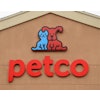
The Asia-Pacific pet care market has reached US$30 billion in sales to date in 2025, making it the third largest region globally, according to Euromonitor International. Though that equates to only a third of the size of the North American pet care market, the largest worldwide, Asia-Pacific is the fastest-growing among emerging markets. And pet food accounts for the largest share of the market at US$20 billion.
This data came from Sahiba Puri, global insight manager, pet care, for Euromonitor, during Petfood Forum Asia 2025, held in Bangkok on October 29. She said the region’s growth is slowing, projected to maintain 3% compound annual growth through 2030; the slowdown is due mainly to lower growth in China, by far the largest country in terms of pet care in the region. Yet other countries, such as Thailand and India, are fueling growth in Asia-Pacific. India especially presents significant opportunity because currently, only 3-4% of dogs and cats there eat commercially prepared pet food.
Another factor affecting growth in Asia-Pacific is the price level of pet food sales. Economy-priced brands lead sales in Southeast Asia and are expected to increase through 2030, though so are premium-priced pet foods (from a much smaller base). Meanwhile, in China, mid-priced brands continue to rule; and in Japan, where premium is most prevalent, all segments are continuing to shrink, Puri said.
Trends shaping the pet food market: Limit to premiumization
Within that context, Puri highlighted the top trends driving the pet food market in Asia-Pacific:
- The volume cliff: Pricing push weighs heavy on volumes.
- Push for premium: Pet roles evolve, so do price tags.
- Homing in on health: The era of preventive pet health management.
- Channel dynamics: Pet specialists and digital platforms take the lead.
- AI integration: Enabling personalized pet health management.
Puri focused on several of these trends, starting with premiumization. Using dry dog food data as the example (because it’s largest pet food segment), she showed how it is increasing at only a 1% annual growth rate, while accounting for a 49% share of the Asia-Pacific market. Growth is down from 3% in 2021, though it has stabilized since a decline in 2022. (Premium dry cat food, on the other hand, was increasing at a 14% rate back in 2021 and is now only at 4% and continuing to decline.)
While the majority of pet owners in the region, 68%, consider their pets beloved family members, as in most other regions worldwide, there is a limit to how much they can and will spend on pet food, Puri posited. She shared data indicating that more pet owners than non-owners in several countries in Asia-Pacific were more likely to say they would prefer to buy fewer but higher quality things. “Premiumization comes at the cost of the amount of volume that can be moved at a higher price,” she explained.
In addition, she gave examples of “affordable premium” pet foods, saying they address a gap in the market and enable access to more pet owners. Her comments and data echoed information we’re seeing about pet owners and pet food pricing all around the world, that there is a threshold to what even the most affluent pet owners are willing to pay for pet food.
Puri’s advice: “Brands need to establish clear pathways to a premium positioning. Innovations around pet health present clear routes.”
Asia-Pacific pet retailing: Unique experiences
That comment led into Puri’s discussion of the “homing in on health” trend. Please watch for a follow-up column on that soon.
She also talked about channel dynamics, particularly the ongoing growth of e-commerce but also how pet specialty brick-and-mortar retailers in Asia-Pacific are “holding their own,” often by serving up engagement and experiences that people can’t find online.
My favorite example: A pet retailer in Singapore called Heads Up for Tails that offers a huge retail space — plus a café for human food where pets are welcome and a center area with a large pool where people and their dogs can swim together! They can even access physical therapy together.
If that’s not a unique experience, I don’t know what is.


















